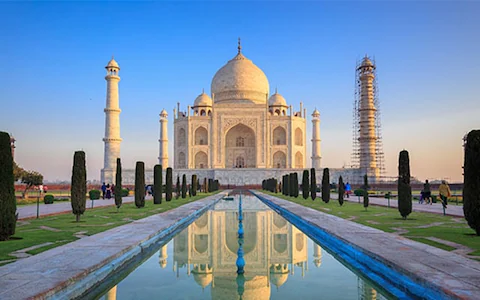Agra, renowned for its historical landmarks, including the iconic Taj Mahal, attracts millions of tourists each year. Creating a tourism app tailored for Agra visitors can enhance their travel experience, provide essential information, and promote local businesses. Here’s a step-by-step guide on how to develop a successful tourism app for Agra.

Table of Contents
Toggle1. Define Your Target Audience
Before diving into app development, identify your target audience. Are you catering to domestic tourists, international visitors, or both? Understanding your audience’s preferences, interests, and pain points will help tailor your app’s features and content accordingly.
2. Research Competitors and Market Trends
Analyze existing tourism apps, particularly those focused on Agra or similar destinations. Identify their strengths and weaknesses, and consider market trends to discover gaps your app could fill. This research will help you position your app effectively and offer unique features.
3. Outline Essential Features
Based on your research, outline the essential features your app will include. Here are some must-have features for a tourism app for Agra:
- Interactive Map: Provide an interactive map highlighting key attractions, restaurants, hotels, and local businesses.
- Attraction Information: Include detailed descriptions, operating hours, entry fees, and tips for visiting popular sites like the Taj Mahal and Agra Fort.
- Local Events: Feature information about local festivals, cultural events, and exhibitions happening during the visitors’ stay.
- Itinerary Planner: Allow users to create personalized itineraries, suggesting nearby attractions and optimizing travel routes.
- Booking Services: Integrate options for booking guided tours, transportation, and accommodation directly through the app.
- Multilingual Support: Offer the app in multiple languages to cater to international tourists.
- User Reviews and Ratings: Enable users to leave reviews and ratings for attractions and services to help others make informed decisions.
4. Design an Intuitive User Interface (UI)
A user-friendly interface is crucial for engaging users. Design an intuitive and visually appealing UI that allows easy navigation and quick access to essential information. Utilize high-quality images of attractions and a cohesive color scheme that reflects Agra’s culture and heritage.
5. Develop the App
Choose the appropriate development approach based on your target audience and budget:
- Native App Development: Create separate apps for iOS and Android platforms for optimal performance and user experience.
- Cross-Platform Development: Use frameworks like React Native or Flutter to develop a single app that works on both platforms, saving time and resources.
Engage a skilled development team to ensure your app is built with best practices in mind, focusing on performance, security, and scalability.
6. Integrate GPS and Location Services
Utilize GPS and location services to enhance user experience. Features like geolocation can help users find nearby attractions, restaurants, and services. Consider implementing augmented reality (AR) for an immersive experience, allowing users to view historical information about landmarks through their devices.
7. Incorporate Local Business Promotions
Partner with local businesses, such as restaurants, shops, and tour operators, to feature promotions and discounts within the app. This collaboration can benefit both the businesses and the app by attracting users to these local services, thereby enhancing the overall tourism experience.
8. Test the App Thoroughly
Conduct extensive testing to identify and fix bugs or performance issues. Test the app on various devices and operating systems to ensure compatibility. Gather feedback from beta users to refine features and enhance usability.
9. Launch and Promote the App
Once your app is ready, plan a strategic launch. Utilize social media, local tourism boards, and partnerships with travel agencies to promote your app. Consider creating promotional campaigns, such as limited-time offers or contests, to attract initial users.
10. Gather Feedback and Continuously Improve
After launching the app, actively seek user feedback to identify areas for improvement. Regularly update the app to add new features, enhance existing ones, and address any user concerns. Keeping the app fresh and relevant will help maintain user engagement and attract new visitors.
Conclusion
Creating a tourism app for Agra visitors presents an exciting opportunity to enhance the travel experience and promote local attractions and businesses. By following these steps and focusing on user needs, your app can become an invaluable resource for tourists exploring the rich cultural heritage and history of Agra. With the right features, design, and marketing strategy, your app can significantly impact the local tourism landscape, benefiting both visitors and the community.


No responses yet